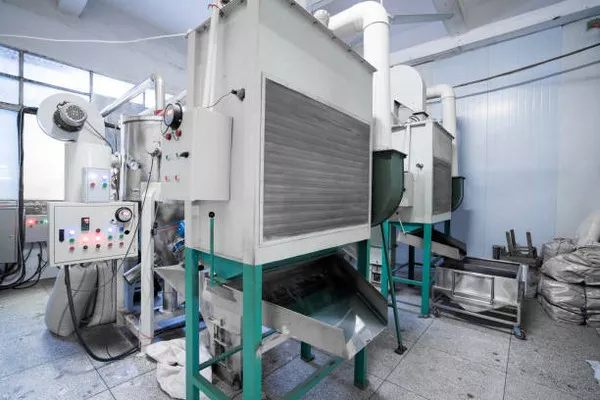In an era where uninterrupted power supply is crucial for both residential and commercial activities, standby generators have become indispensable. Whether it’s a sudden power outage due to inclement weather or routine maintenance on the grid, having a reliable standby generator ensures that essential functions continue without interruption. However, determining the right size for a standby generator is a critical decision that requires careful consideration of various factors. In this article, we will explore the key considerations and steps to help you determine the optimal size of a standby generator for your specific power needs.
Understanding Power Needs
Before delving into the specifics of standby generators, it is essential to understand your power needs accurately. Start by creating a comprehensive list of all the appliances, devices, and systems that you want to keep running during a power outage. Consider both essential items such as refrigerators, lights, and heating or cooling systems, as well as critical equipment for businesses, such as servers and medical equipment.
Once you have a detailed list, calculate the wattage requirements for each item. This information is typically available on the product labels or in the user manuals. Add up the total wattage to get an estimate of your overall power needs during an outage. It’s crucial to include a buffer to account for potential spikes in power demand when multiple devices start simultaneously.
Choosing the Right Generator Size
Generators are rated in kilowatts (kW), and selecting the right size depends on the total wattage of the devices you want to power. A generator that is too small may struggle to meet your needs, leading to potential damage and disruptions. Conversely, an oversized generator may result in unnecessary expenses and inefficient operation.
For smaller residential applications, generators typically range from 8 kW to 22 kW, while larger commercial generators can exceed 150 kW. To determine the ideal size for your standby generator, consider the following factors:
Essential vs. Non-Essential Loads: Differentiate between essential and non-essential loads. Essential loads include items critical for safety and well-being, such as medical equipment, heating/cooling, and refrigeration. Non-essential loads can be prioritized based on available power.
Load Management: Implement load management strategies to stagger the startup of devices and prevent a sudden surge in power demand. This can help optimize the performance of a smaller generator.
Sizing Calculators: Use online sizing calculators provided by generator manufacturers. These tools take into account various factors, including location, altitude, and temperature, to recommend an appropriate generator size.
Professional Assessment: Consult with a qualified electrician or generator specialist to conduct a thorough assessment of your power needs. They can provide valuable insights into local regulations, installation requirements, and specific considerations for your property.
Fuel Type and Availability
In addition to size considerations, the choice of fuel for your standby generator is another crucial factor. Standby generators are commonly powered by propane, natural gas, or diesel. Each fuel type has its advantages and considerations.
Propane: Propane generators are efficient and environmentally friendly, emitting fewer pollutants than diesel generators. Propane is stored in tanks on your property, providing a reliable fuel source.
Natural Gas: Natural gas generators are convenient for properties with access to a natural gas supply. They require a continuous supply of gas, making them suitable for areas with reliable gas infrastructure.
Diesel: Diesel generators are known for their reliability and fuel efficiency. They are a preferred choice in remote areas where natural gas or propane may not be readily available.
Consider the availability and cost of fuel in your area when choosing a standby generator. Additionally, factor in the potential impact of fuel shortages during emergencies.
Installation and Local Regulations
Installing a standby generator involves compliance with local building codes and regulations. Before purchasing a generator, check with local authorities to understand any restrictions or requirements for installation. Some key considerations include:
Permitting: Determine whether a permit is required for the installation of a standby generator. The permitting process ensures that the installation meets safety standards and zoning regulations.
Noise Regulations: Generators can produce noise during operation. Check local noise regulations to ensure that the generator complies with permissible noise levels, especially in residential areas.
Location: Select an appropriate location for the generator, considering factors such as ventilation, accessibility for maintenance, and compliance with setback requirements.
Installation Costs: Factor in the cost of professional installation, including any necessary electrical work, gas connections, or concrete pads required for generator placement.
See Also: How Long a Generator Will Run?A Closer Look
Conclusion
Choosing the right standby generator size involves a thorough understanding of your power needs, load management strategies, fuel considerations, and adherence to local regulations. While sizing calculators and online tools can provide initial guidance, consulting with a qualified professional is essential to ensure a reliable and efficient power backup system.
Investing in a standby generator that meets your specific requirements ensures that you can weather power outages with confidence, whether you’re safeguarding your family’s comfort or ensuring uninterrupted business operations. Take the time to assess your needs, explore available options, and work with experts to make an informed decision that aligns with your long-term power resilience goals.

